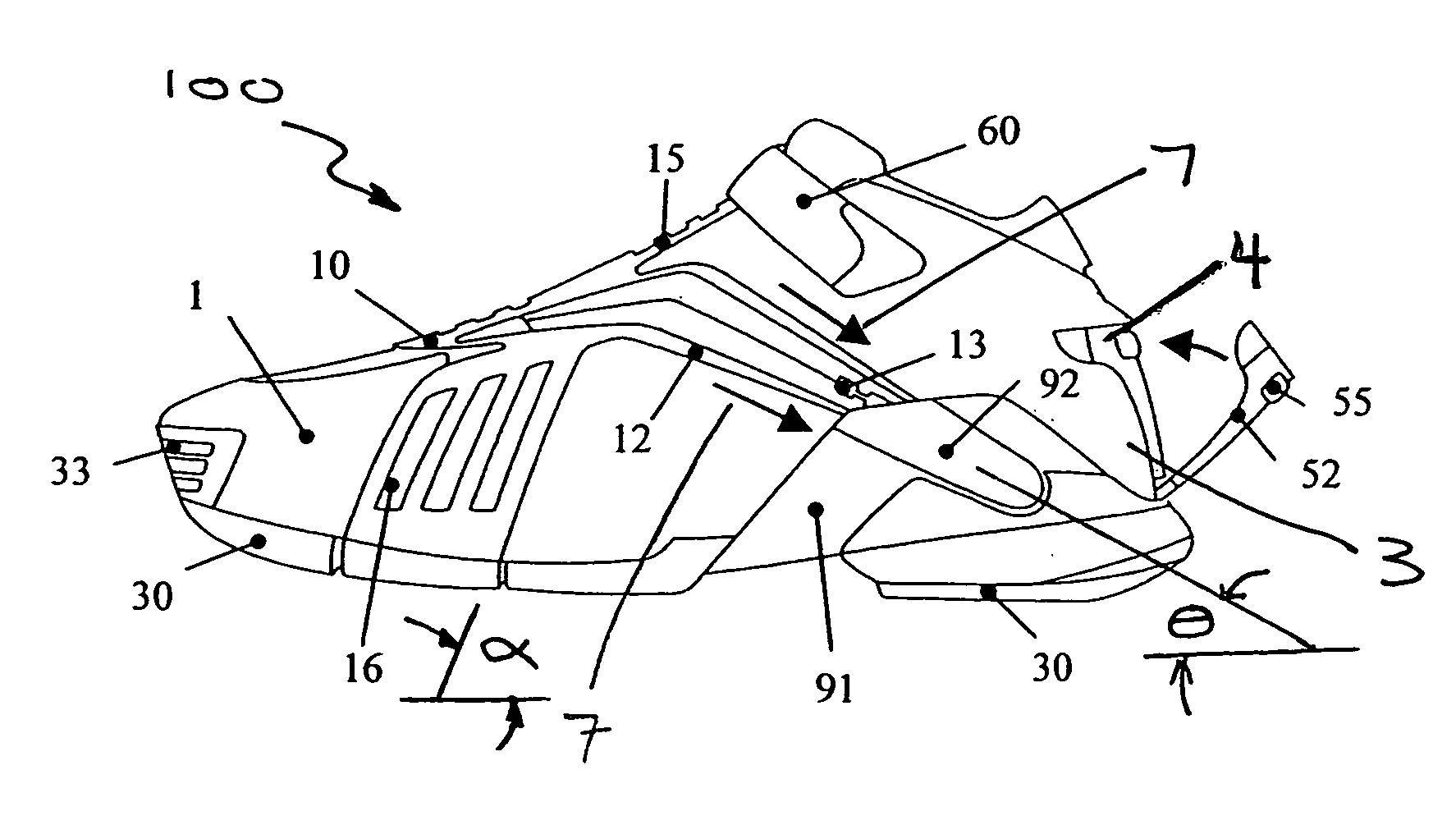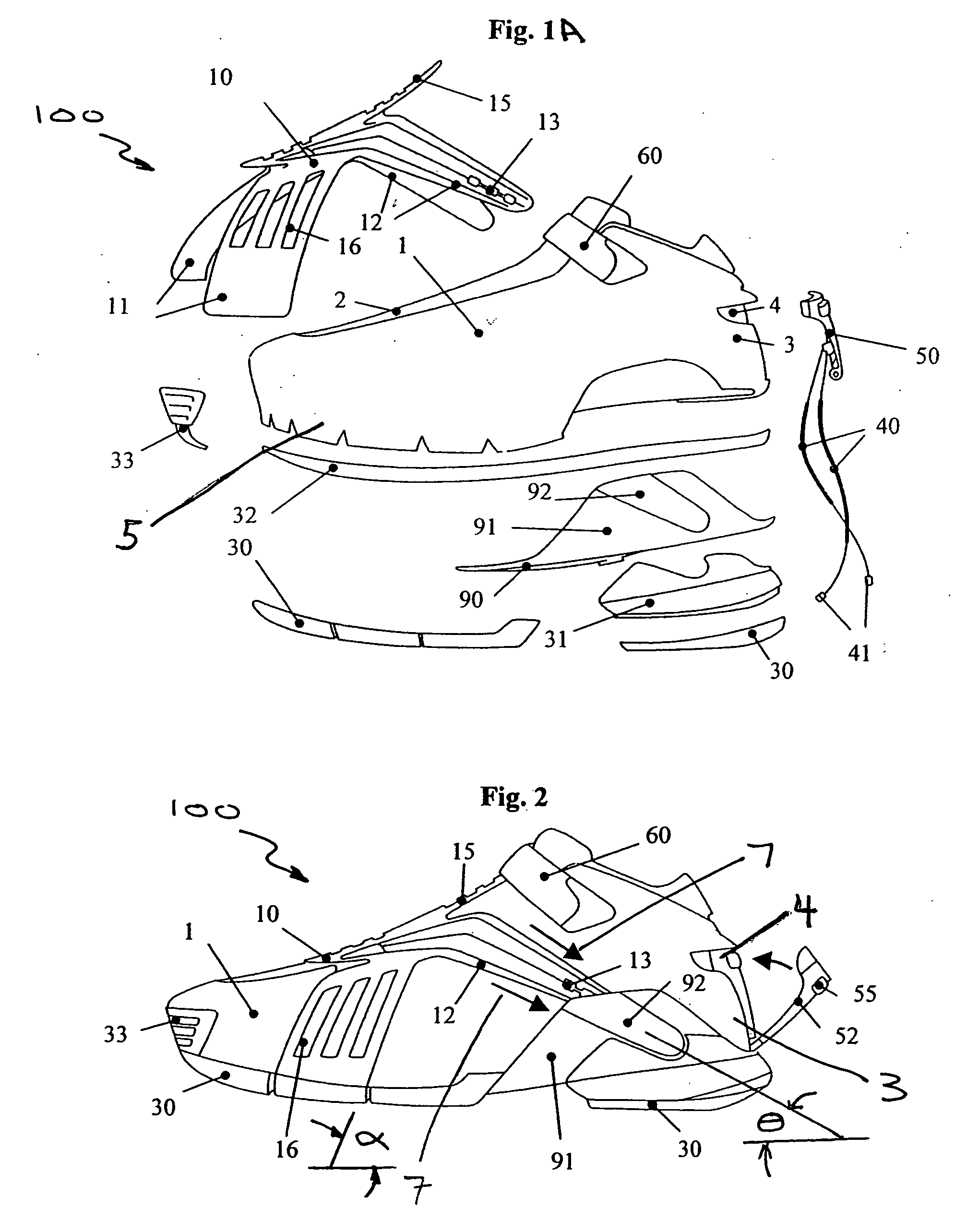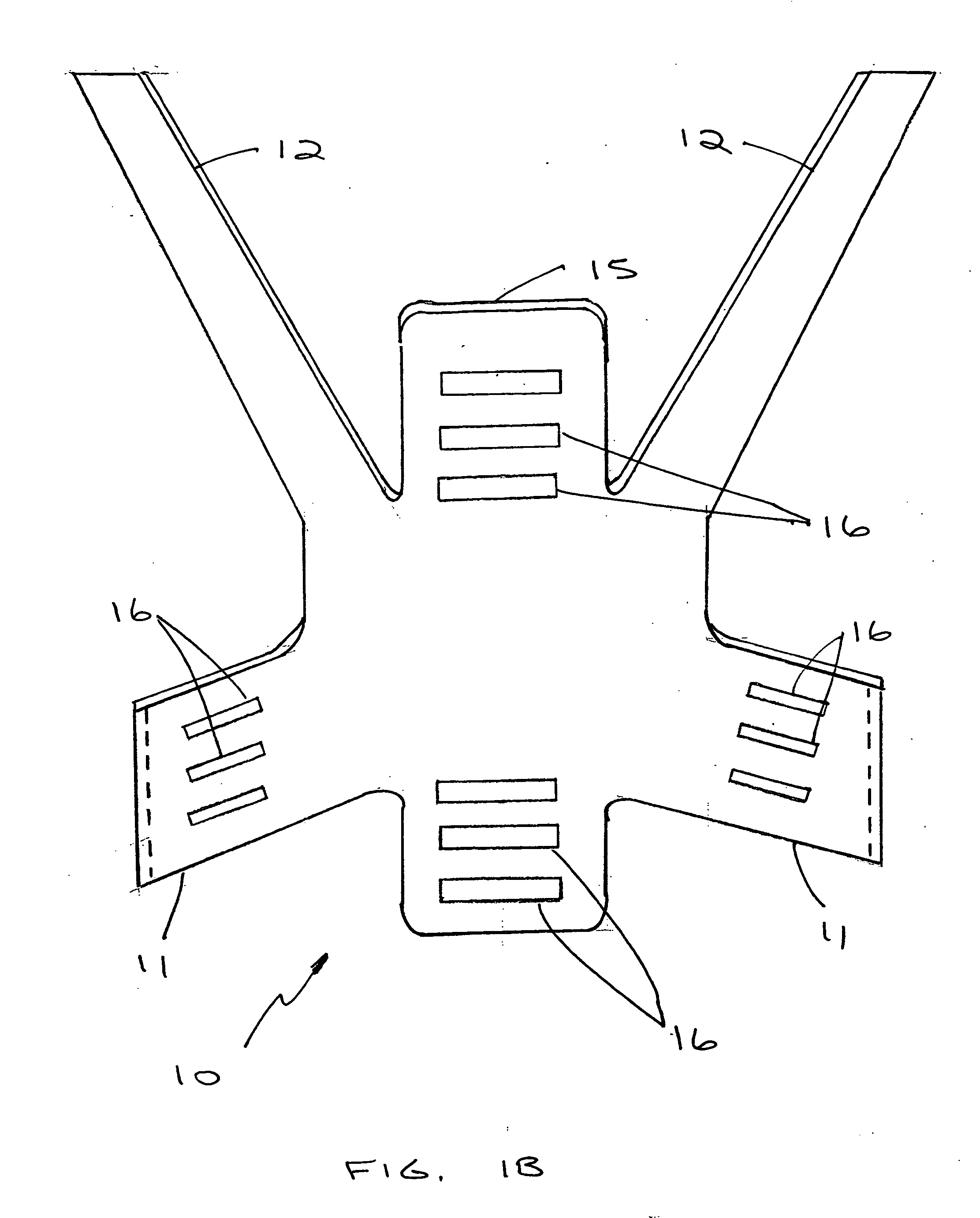Shoe closure system
a technology of closure system and shoelace, which is applied in the field of shoelace, can solve the problems of requiring a considerable amount of attention, loosening or becoming loose, wear, etc., and achieves the effect of adjusting the tension and facilitating the operation of the tightening elemen
- Summary
- Abstract
- Description
- Claims
- Application Information
AI Technical Summary
Benefits of technology
Problems solved by technology
Method used
Image
Examples
Embodiment Construction
[0036] Embodiments of the present invention are described below. It is, however, expressly noted that the present invention is not limited to these embodiments, but rather the intention is that modifications that are apparent to the person skilled in the art are also included. In particular, the present invention is not intended to be limited to athletic shoes, but rather it is to be understood that the present invention can also be in any of a variety of shoes with flexible uppers, for example a running shoe, a basketball shoe, or a common street shoe.
[0037]FIG. 1A shows an exploded view of one embodiment of a shoe 100 in accordance with the present invention. The shoe 100 includes an outsole 30, a heel wedge 31, a midsole 32 and a toe cap 33. A closure panel 10 is arranged above an upper 1, the upper 1 being made from a conventional flexible material, such as a synthetic mesh material or leather. The closure panel 10 is arranged on the outside of the instep area 2 of the upper 1....
PUM
 Login to View More
Login to View More Abstract
Description
Claims
Application Information
 Login to View More
Login to View More - R&D
- Intellectual Property
- Life Sciences
- Materials
- Tech Scout
- Unparalleled Data Quality
- Higher Quality Content
- 60% Fewer Hallucinations
Browse by: Latest US Patents, China's latest patents, Technical Efficacy Thesaurus, Application Domain, Technology Topic, Popular Technical Reports.
© 2025 PatSnap. All rights reserved.Legal|Privacy policy|Modern Slavery Act Transparency Statement|Sitemap|About US| Contact US: help@patsnap.com



